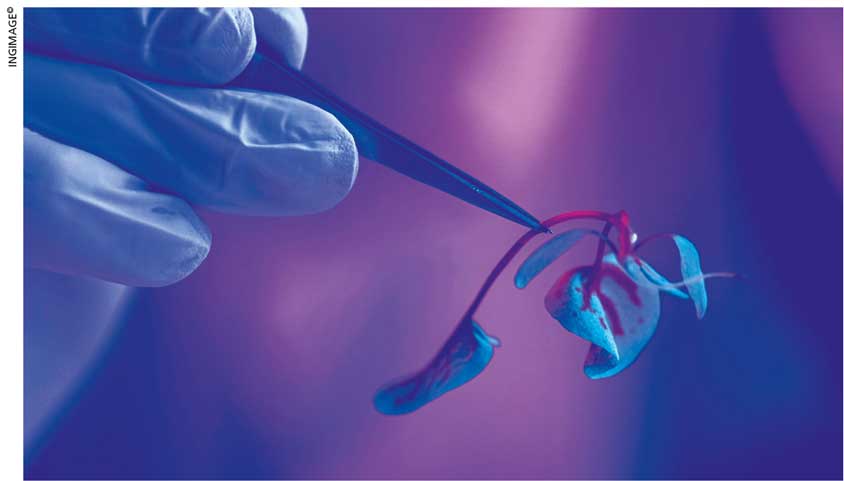BIOTECH INDUSTRY
BIOTECHNOLOGY’S GOLDEN ERA
Akila Wijerathna explains how biotech helps build economies and save lives

Biotechnology uses living organisms to make or modify products, improve plants and animals, develop microorganisms for specific uses, manufacture goods and provide services. The pandemic has highlighted the value of the biotechnology industry and marked its golden era.
And biotech has played a critical role in developing and shipping COVID-19 vaccines in record time. The vaccines are a triumph of the industry and venture capitalists, as well as wealthy angel investors who funded their development.
This technology offers a range of possibilities and has the potential to cure cancer, end world hunger and reverse climate change. Products resulting from biotechnology enable humans to live longer and healthier lives, be more environmentally sustainable and produce more with less resources.
It is recognised as a significant driver of the growth of new industries based on discoveries in the life sciences. The influence of biotechnology will increase substantially in the future as new products and processes are developed, and these are expected to have considerable economic and social implications.
However, turning biotechnology into a business proposition entails a complex process because technology itself is changing rapidly. Similarly, the lines between discovery, research, development and commercialisation are blurred.
It can be used in a range of sectors such as human therapeutics and ways of diagnosing a range of diseases; agriculture that includes both plants and animals; environmental remediation; food and beverage production; IT; and bioinformatics.
Diagnostic tests to analyse diseases have also increased sensitivity and specificity, and provide better and earlier identification, as well as the opportunity for rapid intervention. In general, diagnostics are brought to the market quicker than therapeutics and there’s an opportunity for businesses to generate income earlier.
In addition, diagnostics and therapies are moving closer – leading to safer, more effective treatments designed specifically for individual patients based on their genetic dispositions and reactions to the drugs available. The challenges are to understand the complexity of the diseases, environmental effects and individual genetic makeups.
Food production stands to gain considerably from biotechnology. Genetic modification will enable new crops to be developed with resistance to environmental conditions that lead to poor yield and quality or produce desirable properties.
For example, pest resistant crops with better handling characteristics have been developed. Herbicide tolerant crops allow farmers to use relatively inexpensive broad spectrum chemical agents to control most weeds found in fields rather than more toxic weed specific herbicide mixes.
Reductions in chemical applications have led to lower costs for the agricultural industry and environment, and reduced contamination of soil and groundwater. However, consumer attitudes to the potential impact of genetically modified food crops on human health and the environment have important implications for agricultural biotechnology.
Consumers generally accept the use of genetically modified organisms in medicine rather than food. There’s also potential to use crops and farmed plants on a large scale to produce biological molecules – such as biopharmaceutical drugs and vaccines or fine chemicals.
Biotechnology is being used to help process waste, eliminate toxic environmental contaminants (bioremediation) and assist in refining metals from ores (bio-leaching). These applications depend on developing appropriate microorganisms with the capability to digest inorganic compounds and render them in forms that can be managed by other processes.
Biotech is not cheap and it’s also financially high-risk. Public funders need to be bold and support R&D for decades, often not knowing where it will lead. For example, the depth of knowledge already gathered enabled the rapid development of COVID-19 vaccines.
Moreover, biotechnology activities are closely linked to intellectual property rights (IPR) such as patents from which economic growth, transference of technology and innovations in the industry are derived.
Therefore, having a legal framework for protecting IPR and data for the discovery of drugs, products and therapies enables researchers to introduce new products, and guarantee economic returns of potential future markets. There also need to be regulatory procedures to assure quality and safety in the clinical environment, and monitor commercialised products.
Innovation in this field is ongoing, and biotech can impact the economy and job growth too. Public and private organisations that focus on this sphere notice improvements in their economy and job growth.
Therefore, the industry should build bridges with policy makers to enable its furtherance for the betterment of the world.




